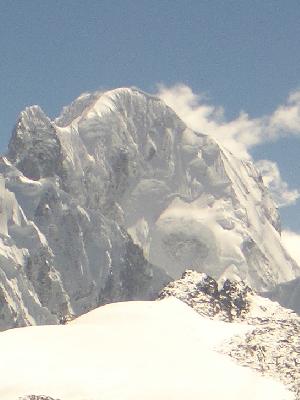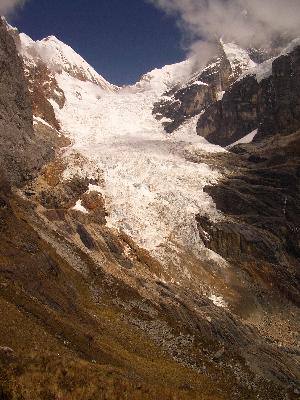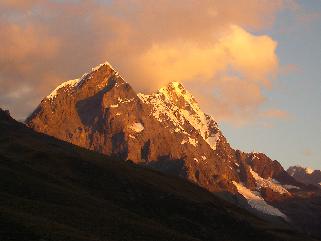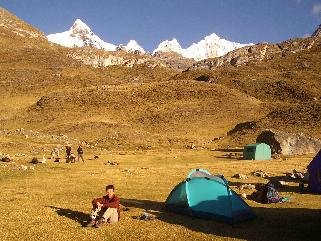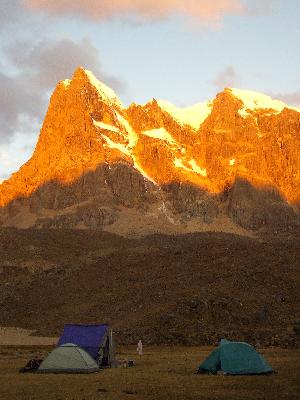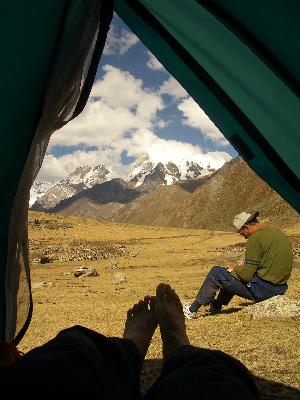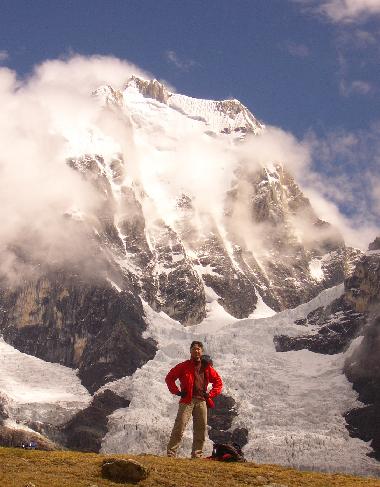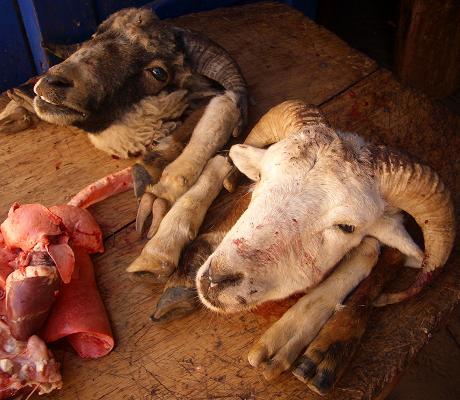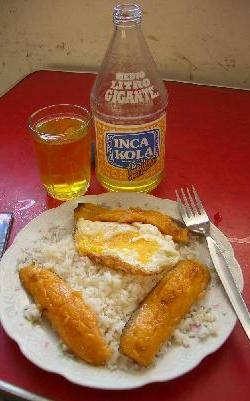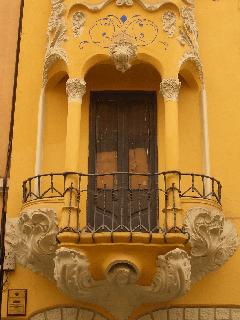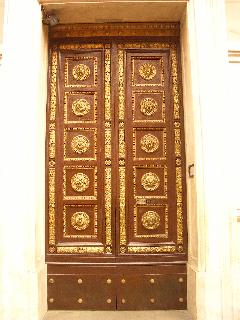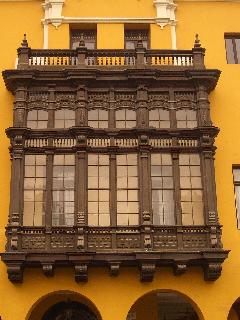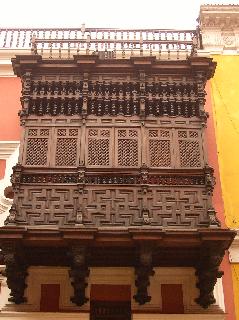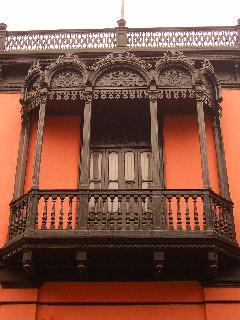| 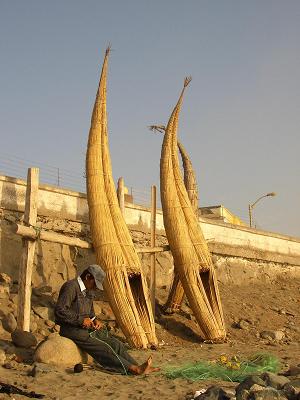
Its the 21st century yet these Peruvian fishermen still use traditional boats made of woven straw. After each use, they dry it out in the sun.
Huanchaco on Peru's Pacific coast (6/2004).
| | 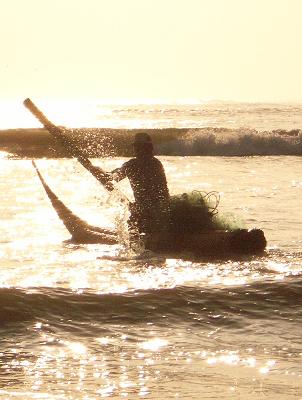
Paddling out into the open Pacific on a straw boat. For 5 sols (C$1.25), theyīll let tourists like me give it a try and pray that we donīt sink the darn thing.
The cold Pacific waters of northern Peru (6/2004).
| |
| 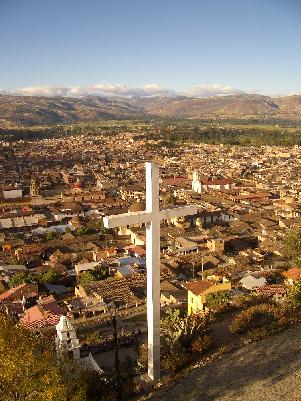
If a South American city has a hill nearby, 100% guranteed there will be some kind of religious statue or cross overlooking town. Cajamarca, Peru (6/2004).
| | 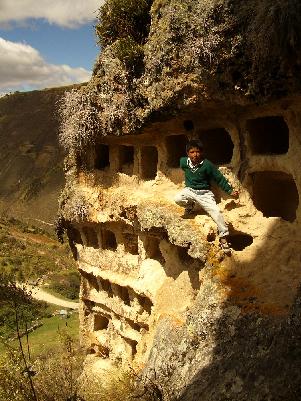
Ruins are normally a real bore but these ones were quite good. Miguel, a local farm-boy showed me around these 2000 year old burial chambers. Northern Peru, (6/2004).
| |
| 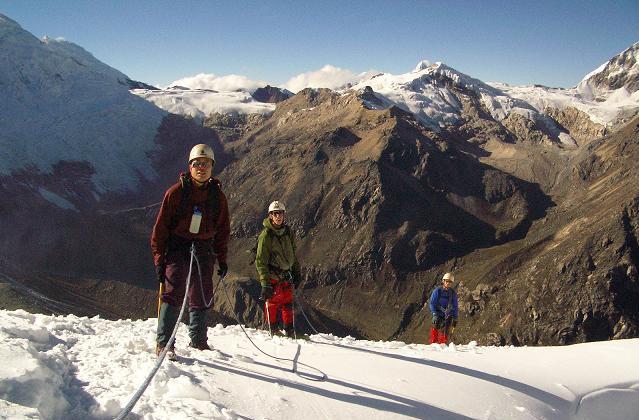
There is no better way to "spice-up" a backpack trip than to embark on a hard-core mountaineering expedition. Nearing the summit of 5495m Urus in the Cordillera Blanca mountains of Peru (7/2004).
| |
| 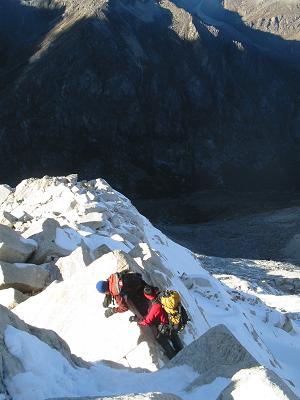
To be really honest, I am a terrible mountain-climber because I hate exposure (ie. afraid of heights) and Iīm a lousy rock-climber too (another obvious necessary talent). In this picture, I am "climbing" a knife-edge ridge by putting half my weight on either side...very bad technique. The other guy in the picture is our mountain-guide Carlos. He is hoping I donīt screw-up īcos that will mean a lengthy and messy rescue.
| | 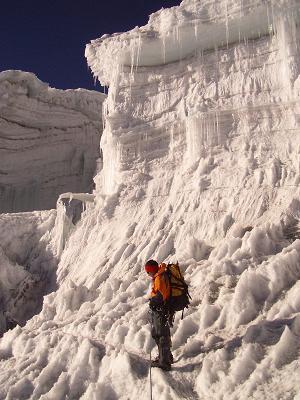
Carlos, our trusty experienced Peruvian mountain-guide has climbed this peak 15 times. Even then, the snow and ice conditions constantly change and needs constant route-accessment. Peru is a cheap country to embark on such adventures. For US$40/day, our group of 3 climbers got a mountain-guide, donkeys to carry up the supplies to base camp, a cook and all the equipment.
Cordillera Blanca, Peru (7/2004).
| |
| 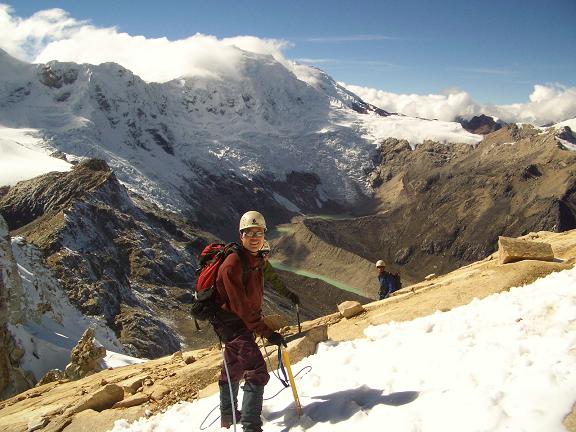
Typical day climbing a major summit : Wake up at 330AM after a few hours of lousy sleep (due
the altitude), stagger out of the tent in the freezing-cold pitch black of
night, eat breakfast in the dark, gather all the climbing equipment, climb up the mountain
in the dark using a headlamp, beat yourself up to the summit like a rented
mule, descend back to base-camp 10 hours later, stagger into bed totally
and absolutely whacked. Why does anyone do this ? .....kind of hard to justify if you really think about it.
High up on Urus in the Cordillera Blanca, Peru (7/2004).
| |
| 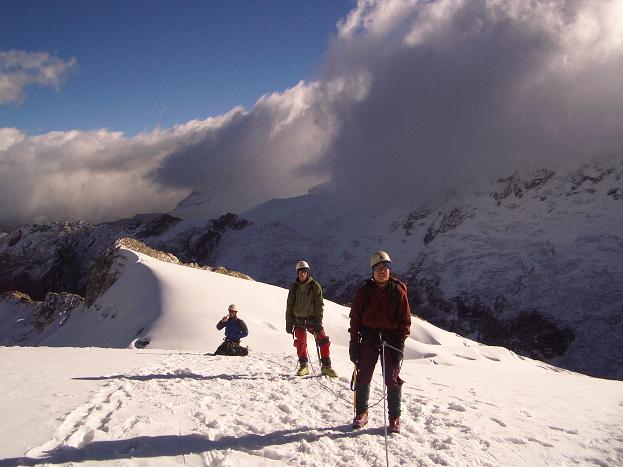
What is the craziest thing you could do after climbing a 5495m summit ? Wake up even earlier the next morning and climb an even bigger summit. Within 15 hours of completing the Urus climb, the same 4 "nutters" tackle 5530m Ishinka located in the adjacent valley. This time, our day starts at 230AM and finishes
12 hours later.
| |
| 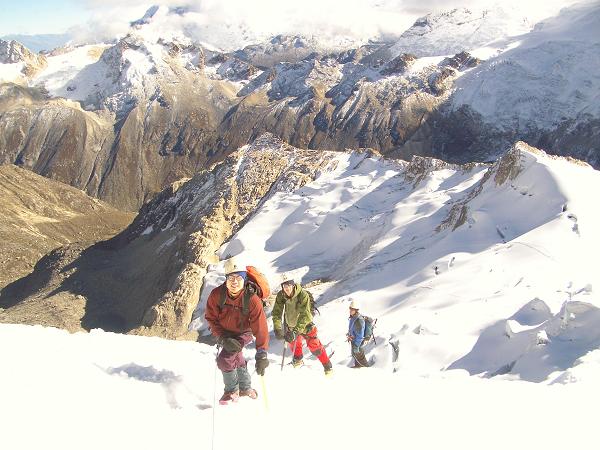
The terrain gets significantly steeper as we approach the summit, I am absolutely shattered by this point. There is only 50% of the oxygen at this altitude so its like breathing with a plastic bag over your head. You talk to yourself a lot saying stuff like, "....OK, move your left leg forward....hey right leg, its your turn now...", and of course the standard cursing, whining and bitching....who the #%$* put me up to this...blah blah blah..
| |
| 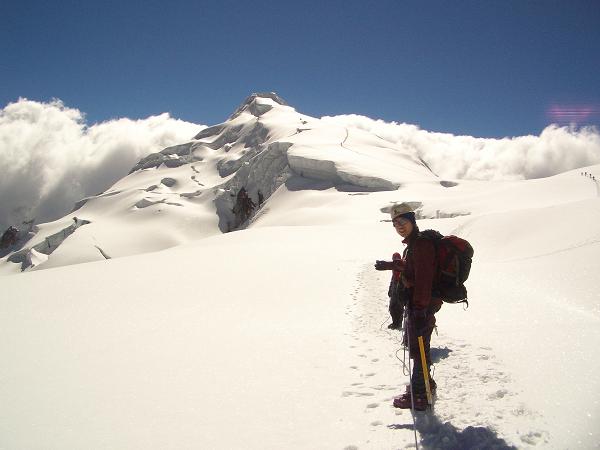
Its much easier on the way down. The hardest part is done and you are euphoric over a successful summit climb. However, most mountaineering accidents occur on the descent so you do not want to add to this statistic. High on
Ishinka's glaciers, looking back towards the summit. Cordillera Blanca,
Peru (7/2004).
| |
| 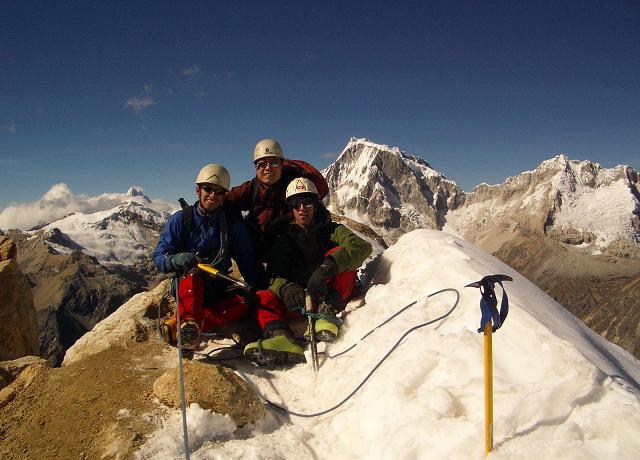
The views and the magnificent high mountain environment are the main reasons I climb. There is an incredible sense of
achievement and accomplishment, and the camaraderie with your fellow climbers.
All the whining, cursing, pain and suffering is a distant memory
now. The 4 days I spent in these high Andean peaks are amongst my
top highlights of my travels. Gary (British), Doug (American) and I, on the 5495m summit of Urus, Cordillera Blanca, Peru (7/2004).
| |
| 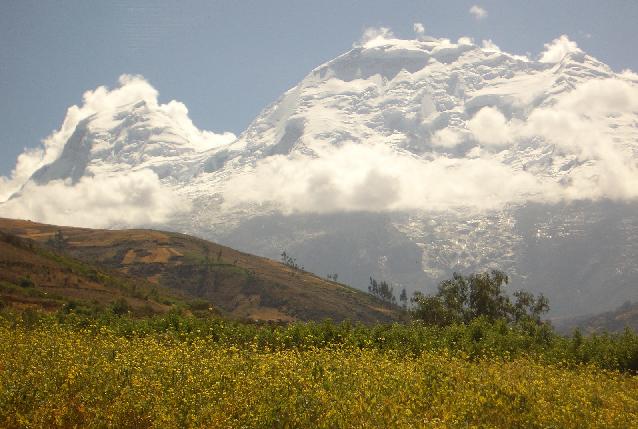
Nevado Huascaran in Peruīs Cordillera Blanca is one of the highest mountains in the world outside of the Himalayas.
| |
| 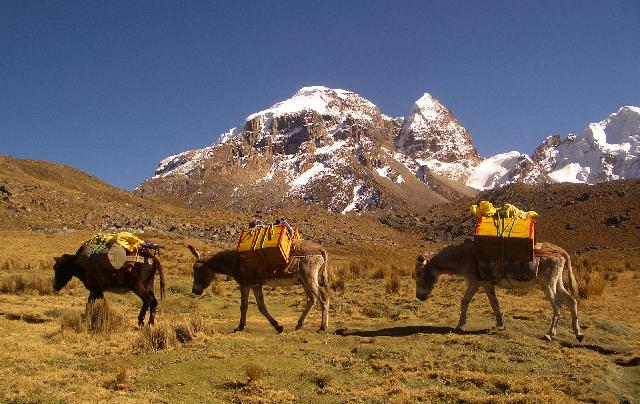
The Cordillera Huayhuash is arguably the most rugged and spectacular mountain range in South America. The 10 day trek around the range is a tough one.
Almost the entire route is above 4000m. There was no way I was going to carry 10 days of food, supplies, gear and stuff....so we whipped out some US$$$, hired a guide/cook/personal slave, dumped the gear on some donkeys and off we went ! Those big heavy looking yellow boxes is our food. Peru (7/2004).
| |
| 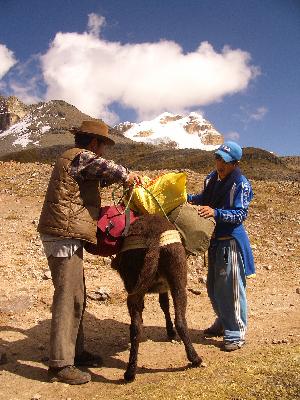
Our 2 "staff members" adjusting the cargo loads. Our guide, Teofanes, has done this trek over 100 times. This 57 year old dude kept up with us with no problems.
| | 
The donkey is a pretty versatile beast. It can handle most terrain easily and just plods along obediently. We needed 4 donkeys to carry all our crap for the 10 day trek.
| |
|
These 2 pictures will be of interest to mountaineering buffs or anyone who has watched/read, "Touching the Void". Left : the almost vertical SE face of Siula Grande which Joe Simpson and Simon Yates climbed. Right : the glacier which Simpson spent 3 days climbing down with a broken leg. Cordillera Huayhuash, Peru (7/2004).
|
|
Every evening was yet another picture perfect grassy meadow campsite in front of some massive mountain. Once the sun goes down, the temperature plummets to near zero celsius.....highly uncomfortable and cold. 9 consecutive nights in a tent is a record I do not intend to break. Cordillera Huayhuash campsites, Peru (7/2004).
|
|
The crappy camp food, freezing cold nights, tenting on lumpy hard ground, altitude problems, no shower for 10 days etc etc have all been forgotten now. When I think back to the Cordillera Huayhuash, all I remember are the stupendous views, gorgeous countryside and the peace & tranquility of the mountains. Nevado Yerupaja (behind me) is one of the hardest climbs in the world. Nobody has stood on its summit in 3 years. Cordillera
Huayhuash, Peru (7/2004).
|
|
What great timing, I arrive in Lima just in time for the Copa America finals (South Americaīs premier football tournament and probably the biggest sporting event on the continent). The final was a classic, Argentina vs. Brazil. I couldnīt decide who to support so I bought hats for both teams. Argentina was the better team so I quickly donned their gear. However, Brazil won in the last minute so I quickly switched sides.
Lima, Peru (7/2004).
|
| 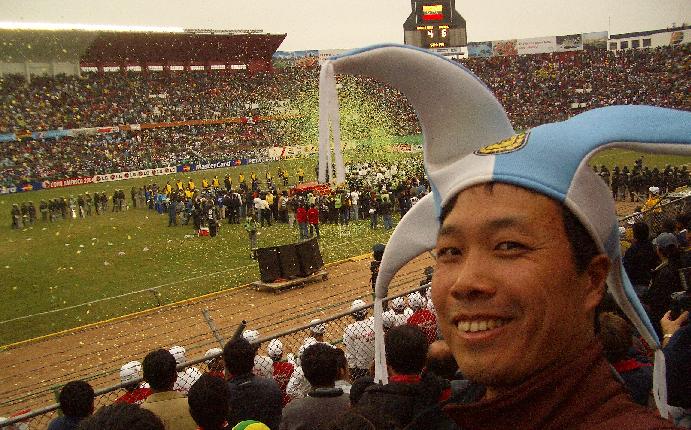
South America is obsessed with football much moreso than even Canadians with hockey. The atmosphere is electric, the crowd is raucous and loud, and the swearing/cursing is out-of-this-world. Back home, youīd be locked-up if you said half the things I heard. Team Brazil receives the Copa America trophy in the National Stadium, Lima (7/2004).
| |
|
Food in Peru absolutely diabolical. 9 out of 10 things you order will be rubbish. This particular dish was so bad I actually had the presence of mind to photograph it. Its plain rice, a fried banana and a fried egg.....no spice, no sauce, no veggies....how I wish for my noodles !!!
|
| 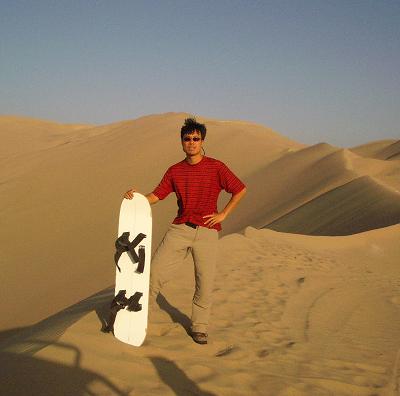
There are not many places in the world you can try the sport of sandboarding. Be prepared to fall a lot and get sand into every orifice of your body. Huacachina, Peru (7/2004).
| | 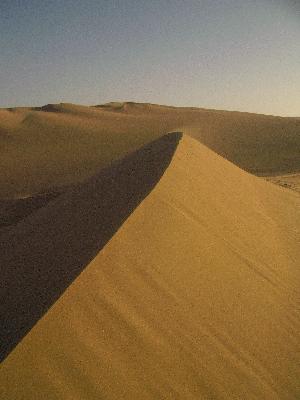
Much of Peru is desert. Most of it is rocky and scrubby but some places have spectacular
Sahara-like sand-dunes. Huacachina, Peru (7/2004).
| |
|
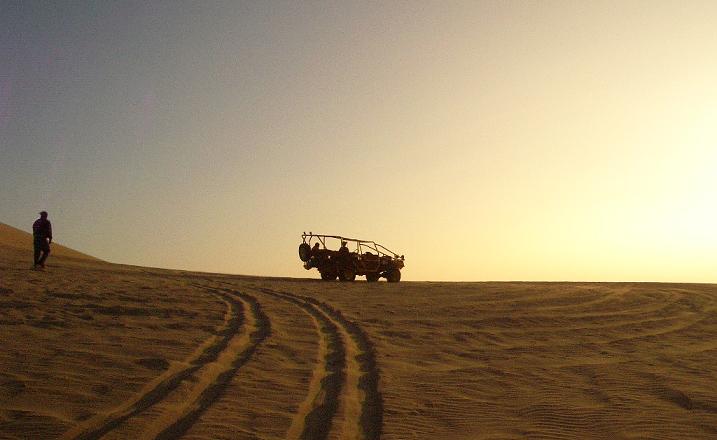
Sunset
on the sand dunes. Huacachina, Peru (7/2004).
| |
|
The Spanish did a "poor job" of conquering Peru. It still has one of the largest remaining indigenous populations in the Americas (over 80% of the population). In other countries, the indigenous population is down to about 1 to 2%.
|
| 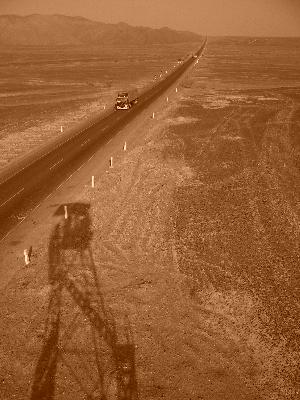
A bunch of scuff marks made on the desert floor a couple of hundred years ago by some drunken Indian teenagers with an artistic tilt...there you have the world famous Nazca Lines !! Nazca, Peru (7/2004).
| | 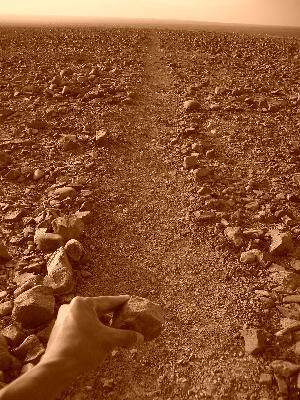
Nazca Lines close-up.......and by picking up this stone, could I be changing the lines ? Then again you will notice on the previous picture that the Peruvian Department of Highways built the Pan-American Highway THROUGH the lines...duh !!
| |
|
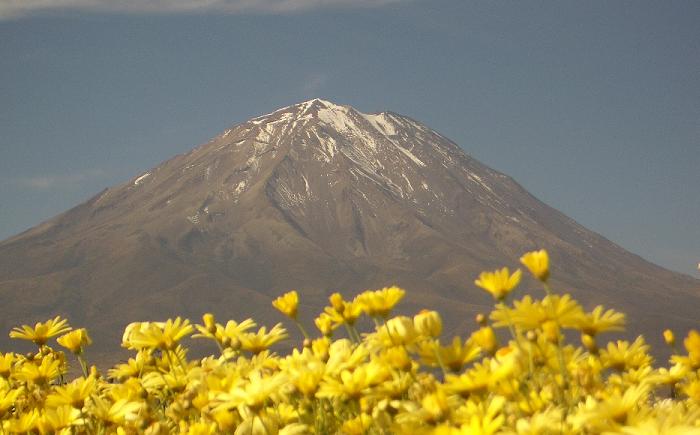
Not many cities can boast a 5800m volcano towering overhead. Arequipa, Peru (8/2004).
| |
|
A visit to Saint Catherines monastery in Arequipa gives you an insight to how people lived 500 years ago. Cooking these days wouldnīt be nearly as much fun in these kitchens. Peru (8/2004).
|
|
The magnificent Andean condor doesn`t really flap its wings often. It finds rising thermals of warm air and soars. With a wingspan of over 3 meters and a weight up to 15 kilos, the Andean condor is one of the largest flying birds. The Colca Canyon in southern Peru is 3100m deep in some places, more than twice that of the Grand Canyon.
|
| 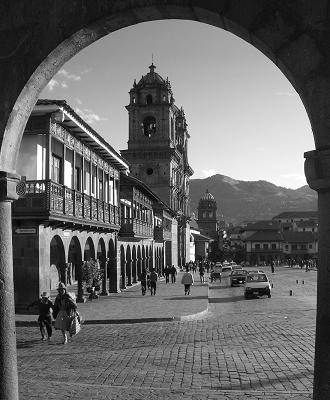
Cuzco, the capital of the Inca empire is probably the most impressive colonial city I have seen in all Latin America.
Plaza Mayor, Cuzco.
| | 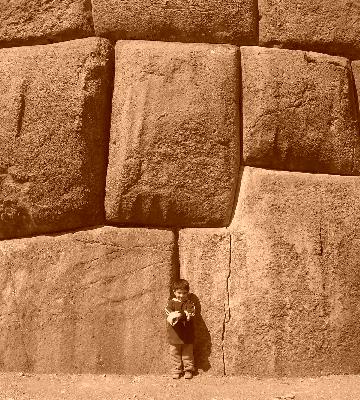
The Inca empire`s archictecture and construction methods were superior to that of the West during its time. Saksaywaman temple near Cuzco.
| |
| 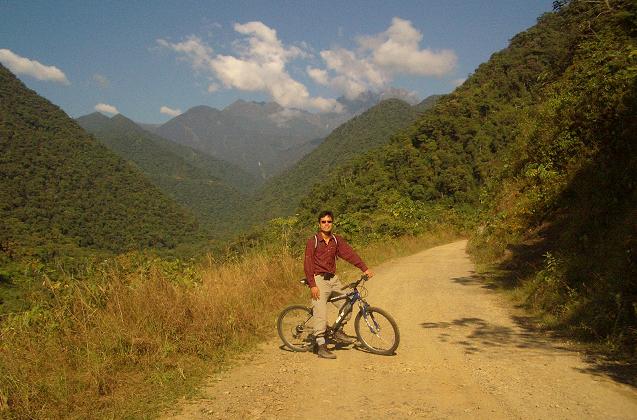
South America is dominated by 2 geographical features, the Andes mountain range and the Amazon basin. I get a great view of both during a bike descent through the
cloud-forest of Manu National Park, Peru (8/2004).
| |
|
The 4300km long Amazon river system is still pristine at this point since we are close to the mountain headwaters with no towns upstream. At every opportunity we`d all go in for a swim to cool off. The only things to watch out for is the occasional cayman (the South American crocodile) and the odd
piranha swimming about. Manu River, Peru (8/2004).
|
| 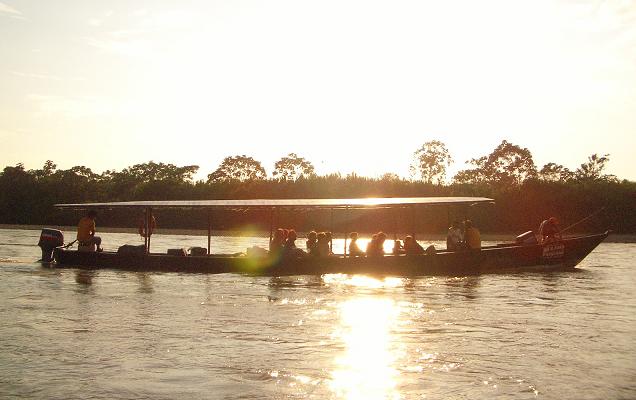
River transportation is the only effective means of transport in most of the Amazon region.
| |
|
A wild scarlet macaw who decided not to bother with all that "living in the wild" stuff. Its much easier just to hang-out in the nice safe jungle lodge with humans, get fed and entertained etc... Manu National Park, Peru (8/2004).
|
|
Back home you typically see one type of butterfly, the orange monarch. Here in the tropical rainforest, I photographed 4 different types within a 10 minute span. The biggest comment/complaint of most people who visit the jungle is that they don`t see anything. That is because there are only a few "right" jungle places left to visit. The Manu region is one of the most remote and
inaccessible jungles in the world. Only 3000 visitors are allowed into the region each year.
|
| 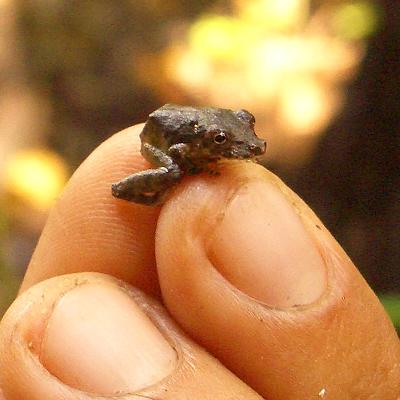
| | 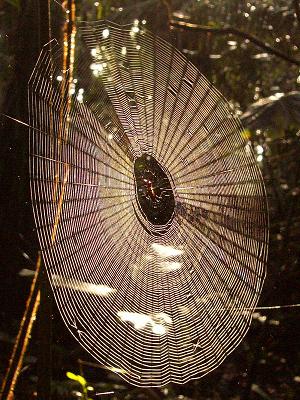
| |
|
|
Most tropical species hate being near humans and will do anything to get away from us, and that includes going extinct. There just isn`t much room left for them now with the world population at 6 billion. Manu National Park is one of the largest protected areas in all the world`s jungle regions. Experts say that it could be the most bio-diverse place on our planet (english translation = contains more plant, insect, bird and mammal species than anywhere else on this planet). Clockwise from the top left : giant otter, turtle, xyz species of monkey (there are 13 types in the region), spider, a really really small frog....I still can`t figure out how our guide saw it !
|
| 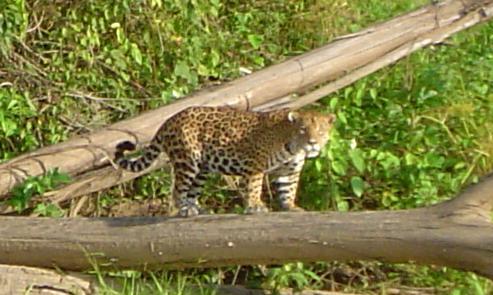
The boat driver screamed, "JAGUAR !!!"....and there she was, sitting on a log by river bank. Between the 9 of us, we probably unloaded 100 photos within the 3 minute audience we had with this magnificent creature. How elusive is the jaguar ? This is our guide`s first sighting ever in over 70 visits to the park. My 8 day trip to the Manu region has been one of my top highlights of this South America trip thus far. Manu National Park, Peru (8/2004).
| |
|
One of the biggest differences between living in a rich country and a poor one is work. People in poor countries generally have to work almost everyday of their lives to provide for their basic needs. Peru (8/2004).
|
| 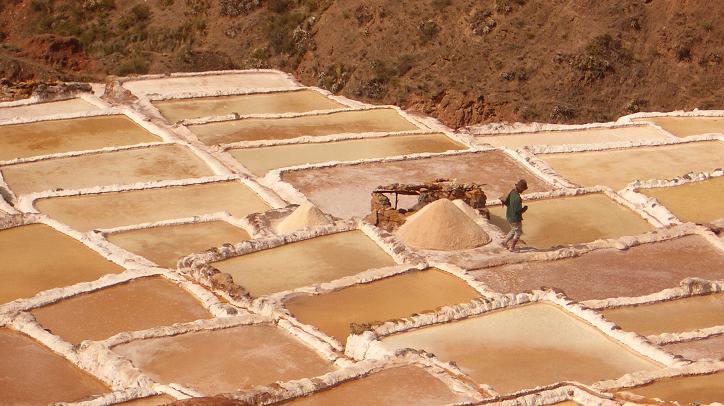
More than a thousand years ago, natives discovered mineral salt waters flowing down a mountainside. Today, they still harvest the salt in the very same way. Salt pans near Urubamba, Peru (8/2004).
| |
|
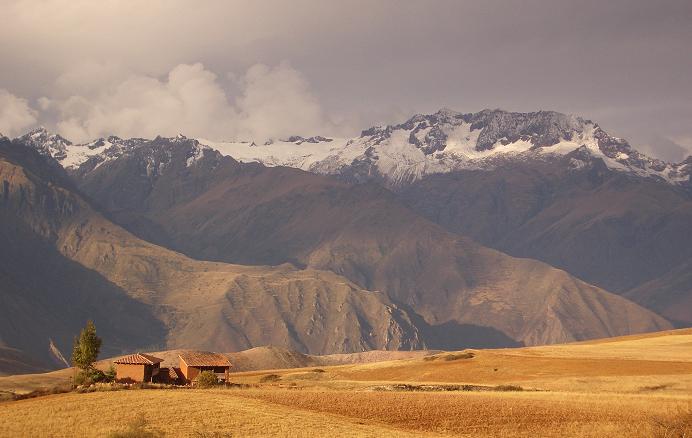
Countryside near Urubamba, Peru (8/2004).
| |
| 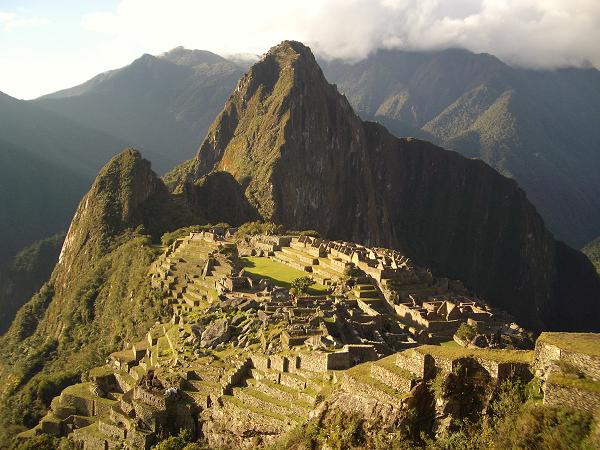
Machu Picchu
- is the most famous and hyped-up tourist sight on the whole continent
- is the most heavily visited single tourist sight in all South America
- is used by the Peruvian government to help pay off its national debt by the way they extort tourist who want to visit it
- is AWESOME and deserves all the hype it gets.
| |
|
Subject:
Machu Picchu .....been there, done that !!! |
Date: Fri, 27 Aug 2004
|
Machu Picchu ...
- is the most famous and hyped-up tourist sight on the whole
continent. - is the most heavily visited single tourist sight in all South
America.
- is used by the Peruvian government to help pay off its national
debt by the way they extort tourist who want to visit this place (which
they did not make anyhow, the Inca empire did all the hard work 600 years
ago).
- is AWESOME, simply incredible and like the Taj Mahal, deserves
all its hype.
It helped that the storm passed by giving the first super nice day
this whole week. MP is in a cloudforest and not in the typical Peruvian
Altiplano as most people including myself thought. Cloudforest means
clouds and rain, so a sunny clear day in MP is quite special.
I was there when the gates opened (6AM) and stayed till gates
closed (530PM) and I still did not totally finish everything. I just
cannot understand how the tour groups (95% of the visitors) do it in the
alloted 5 hours. Crazy buggers.....they all spend a bomb to get there
too.
MPīs biggest problem and curse is the crowds....it is South
America`s premier tourist site and since it is perched precariously on a
cliff/ridge, it does not handle the crowds well. However, lucky me had a
horseshoe up my bum and got MP on probably the least crowded day of the
summer. The storm of the previous days had closed the famous Inca Trail
leading to the ruins.....minus 300 people right then and there. Plus, it
was the worst weather you can imagine the previous 3 days so who in the
right mind would book their MP trip without seeing some improvement
first.
All-in-all, Machu Picchu could be the most stupendous and
breath-taking man-made thing I have ever seen in all my
travels....everyone should try to go see this place once in their
lifetime. Still in Peru after 10 weeks....there is just so much to see
here. Pictures are coming soon....I have just been too busy with all the
fun stuff and spanish studying....poor me !!!
See Ya all,
Lee Chai
|




